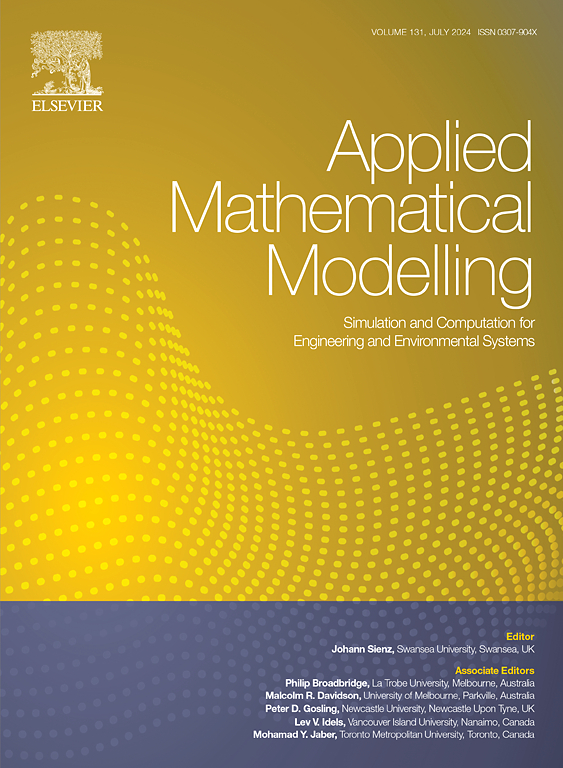Mechanism of toughening due to local twinning transformation
IF 4.4
2区 工程技术
Q1 ENGINEERING, MULTIDISCIPLINARY
引用次数: 0
Abstract
Deformation twins near the crack tip of metals and alloys significantly affect the crack fracture toughness. To study this particular deformation of metals or alloys, in this article, a new analytical model of a semi-infinite crack interacting with a local twinning domain near the crack tip is developed based on Kolosov-Muskhelishvili complex potentials and Green's function method. In the model, the twinning domain as a stress source is equivalent to an assembly of edge dislocations, and thus the dislocation-crack interaction problem is analytically solved. Consequently, the stress intensity factor at the crack tip merely due to the twinning domain is derived for type-I and type-II modes and the influence of deformation twinning parameters on the fracture toughness as well as the shielding/anti-shielding effect is comprehensively analyzed. It is found that the presence of the twinning domain may lead significant stress concentration at the crack tip when its orientation angle of the domain is taken with some specific value. This study provides a new insight into the toughening mechanism of twinning transformation.
局部孪晶相变增韧机理
金属和合金裂纹尖端附近的变形孪晶对裂纹断裂韧性有显著影响。为了研究金属或合金的这种特殊变形,本文基于Kolosov-Muskhelishvili复势和格林函数方法,建立了半无限裂纹与裂纹尖端附近局部孪晶域相互作用的新解析模型。在该模型中,孪生域作为应力场相当于边缘位错的集合,从而解析解决了位错-裂纹相互作用问题。据此,推导了ⅰ型和ⅱ型两种模式下仅由孪晶畴引起的裂纹尖端应力强度因子,并综合分析了变形孪晶参数对断裂韧性和屏蔽/反屏蔽效果的影响。发现当孪晶畴的取向角取一定值时,孪晶畴的存在会导致裂纹尖端出现明显的应力集中。本研究为研究孪晶相变的增韧机理提供了新的思路。
本文章由计算机程序翻译,如有差异,请以英文原文为准。
求助全文
约1分钟内获得全文
求助全文
来源期刊

Applied Mathematical Modelling
数学-工程:综合
CiteScore
9.80
自引率
8.00%
发文量
508
审稿时长
43 days
期刊介绍:
Applied Mathematical Modelling focuses on research related to the mathematical modelling of engineering and environmental processes, manufacturing, and industrial systems. A significant emerging area of research activity involves multiphysics processes, and contributions in this area are particularly encouraged.
This influential publication covers a wide spectrum of subjects including heat transfer, fluid mechanics, CFD, and transport phenomena; solid mechanics and mechanics of metals; electromagnets and MHD; reliability modelling and system optimization; finite volume, finite element, and boundary element procedures; modelling of inventory, industrial, manufacturing and logistics systems for viable decision making; civil engineering systems and structures; mineral and energy resources; relevant software engineering issues associated with CAD and CAE; and materials and metallurgical engineering.
Applied Mathematical Modelling is primarily interested in papers developing increased insights into real-world problems through novel mathematical modelling, novel applications or a combination of these. Papers employing existing numerical techniques must demonstrate sufficient novelty in the solution of practical problems. Papers on fuzzy logic in decision-making or purely financial mathematics are normally not considered. Research on fractional differential equations, bifurcation, and numerical methods needs to include practical examples. Population dynamics must solve realistic scenarios. Papers in the area of logistics and business modelling should demonstrate meaningful managerial insight. Submissions with no real-world application will not be considered.
 求助内容:
求助内容: 应助结果提醒方式:
应助结果提醒方式:


